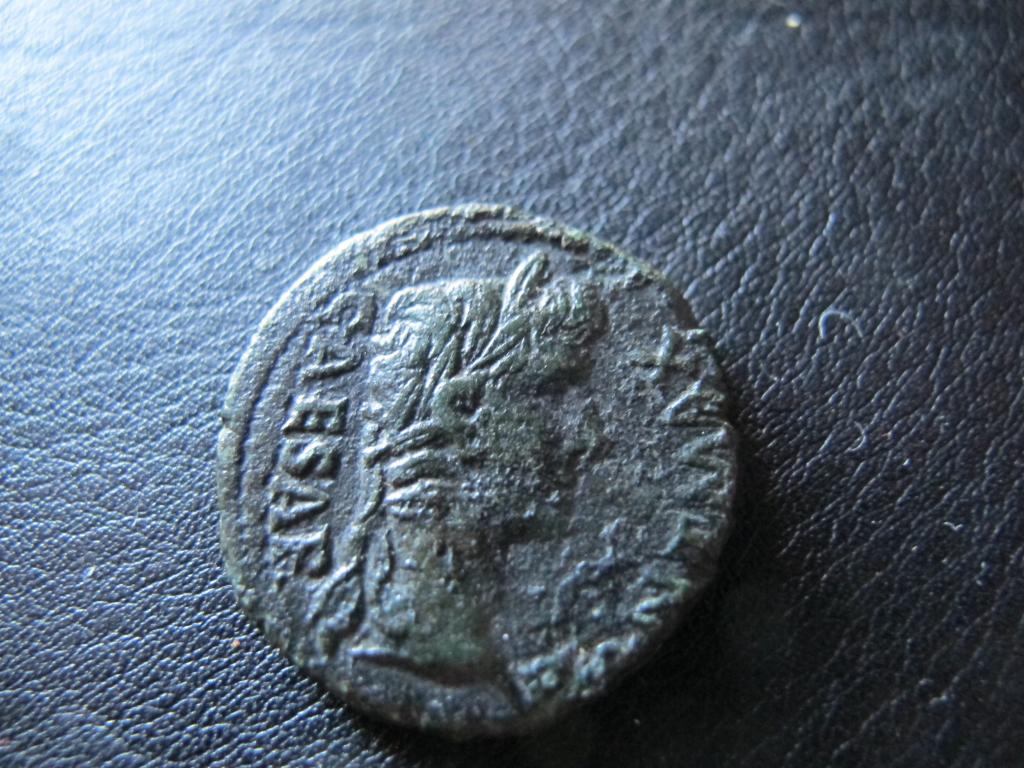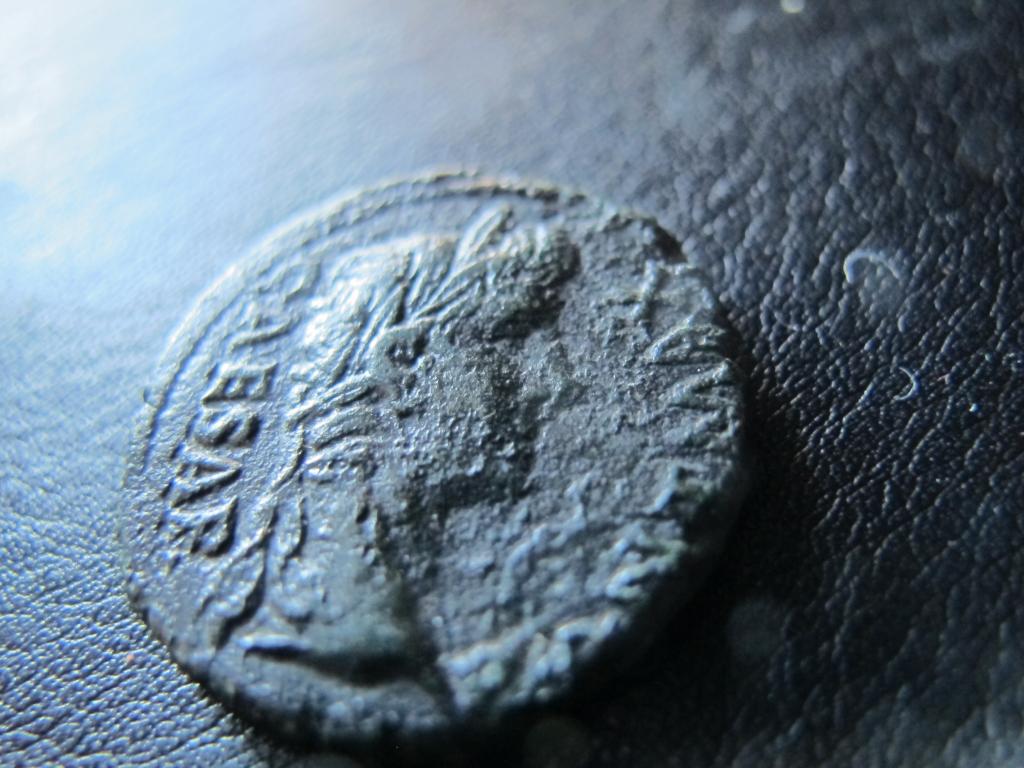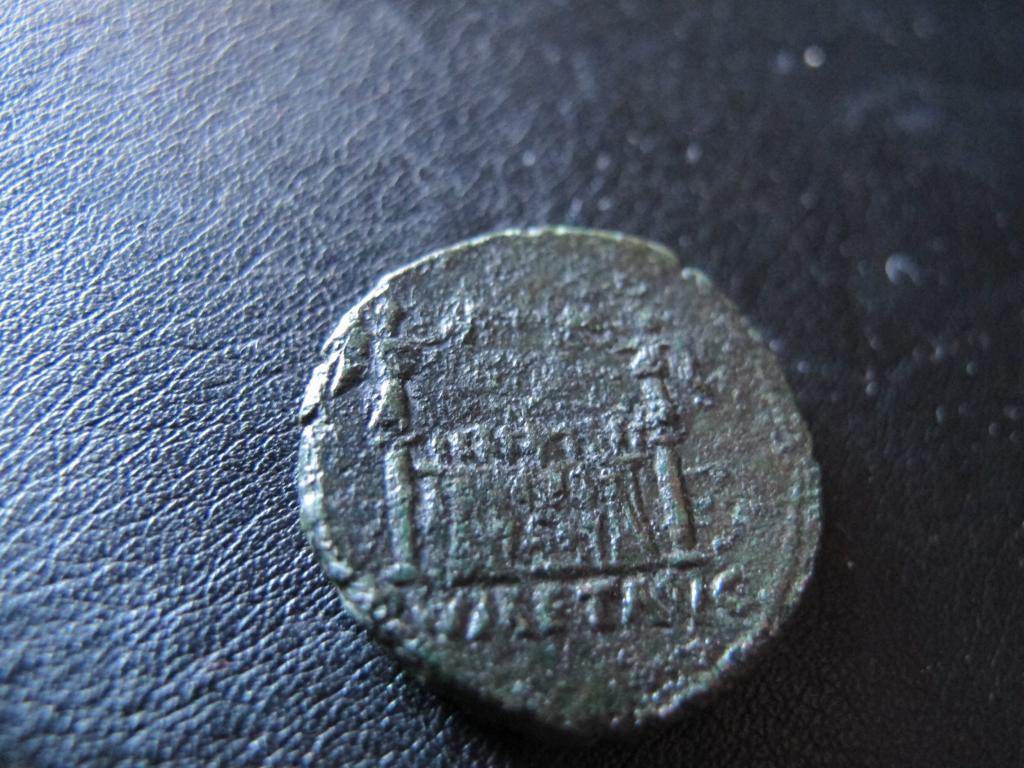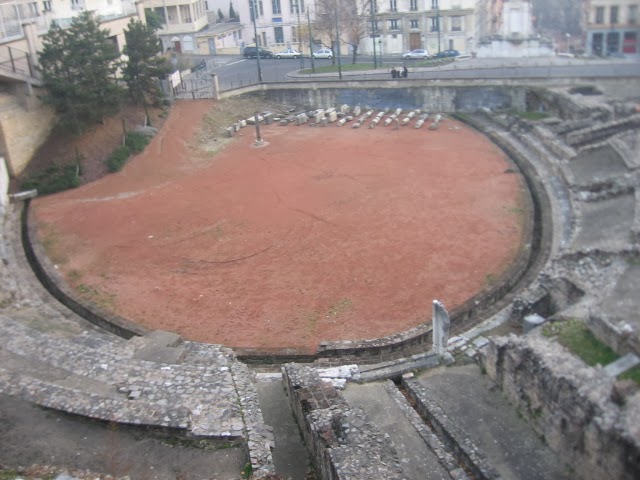Hola a tod@s,
Hoy traigo otra piececita que me faltaba por llegar. A ver si os gusta...
Se la dedico a Patano y a caminoalto ya que no podía dedicar la sílicua a todos a la vez!
Anverso: CAESAR - PONT MAX, laureate head r.


Reverso: Front elevation of the Altar of Lyons;

Exergo: ROM ET AVG
RIC 230.
Peso: 10,8gr
Diámetro: 2,4cm
La Lugdunum romana:"La ciudad de Lugdunum fue fundada en el 43 a.C. por el gobernador de la provincia romana de la Gallia Transalpina, Lucius Munatius Plancus, en la colina de Fourvière. Obtuvo el rango de colonia por el Senado de la República de Roma y en el 27 a.C. se convirtió en la capital de la nueva provincia de Gallia Lugdunensis, surgida de una nueva organización administrativa creada por el emperador Augusto. Lugdunum era uno de los principales lugares de la Galia, ya que aquí se reunía anualmente el Consejo de los Galos, formado por los miembros más influyentes de las tres provincias galas. Su lugar de encuentro era el Templo de Roma y Augusto, situado en las laderas del Croix-Rousse. Con el advenimiento del Cristianismo, Lugdunum se convirtió en un importante centro religioso habiendo sufrido martirio cuarenta y ocho miembros de la comunidad cristiana en el anfiteatro de "las Tres Galias". "
Extraído de: http://www.viatorimperi.com/lyon
El anfiteatro de "Las Tres Galias":
"En la Croix-Rousse se encuentra el anfiteatro romano o "de las Tres Galias" (rue Lucien Sportisse), construido en el 19 a.C., junto con el Templo de Roma y Augusto. Originariamente tenía unas reducidas dimensiones, con capacidad para unas 1.800 personas. Fue financiado por una poderosa familia de Mediolanum Santonum (Saintes), siendo un lugar de encuentro de las sesenta tribus de la Galia. Fue reformado y ampliado durante el principado de Adriano, aumentando su capacidad para más de 20.000 espectadores."
Extraído de: http://www.viatorimperi.com/lyon
El Santuario de las tres Galias:
"The sanctuary was located on the hillside of la Croix-Rousse. The first and main altar can be reconstructed from texts and currency depictions. The geographer Strabo described it in context: "[Lugdunum] is the most populous of all the cities of Celtica except Narbo; for not only do people use it as an emporium, but the Roman governors coin their money there, both the silver and the gold. Again, the temple that was dedicated to Caesar Augustus by all the Galatae in common is situated in front of this city at the junction of the rivers. And in it is a noteworthy altar, bearing an inscription of the names of the tribes, sixty in number; and also images from these tribes, one from each tribe, and also another large altar."
Fishwick suggests that the images (bronze statues) and inscriptions of Strabo's account are stylistically Greek additions to the ara some time after its inauguration.The monumental altar and its 50-meter base were made in marble. It was flanked by two winged victories of gilt bronze, holding palms and gold crowns, standing on ionic capitals, set on columns assumed to be the later source for the four pillars of the transept crossing of the basilica of St-Martin-d'Ainay, which support the dome. These were made from two longer pillars of red Egyptian porphyry, recovered in the 11th century and sawn in half. The open altar appears to have been rebuilt (or adapted) as a covered temple in 121 AD, in the reign of Hadrian. The larger altar was the focus of cult to the genius of the living emperor and dea Roma. The temple was dedicated to the cult of deceased Imperial divi, and major Roman and local deities.
This sanctuary was also the find-spot for the Lyon Tablet, a bronze plaque of 2.5 by 1.93 m on which is engraved Claudius's 48 AD speech making Gallic chieftains eligible for Roman magistracies and membership of the Roman Senate – a version of the speech also survives in Tacitus. It was found by a draper in 1528, in his vineyard on the site of the sanctuary, and is now held in the Gallo-Roman Museum of Lyon."
Extraído de wikipedia: http://en.wikipedia.org/wiki/Sanctuary_of_the_Three_Gauls